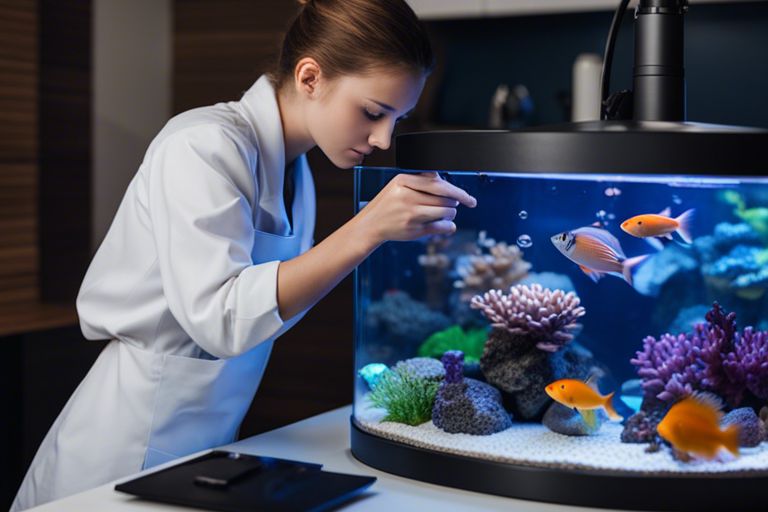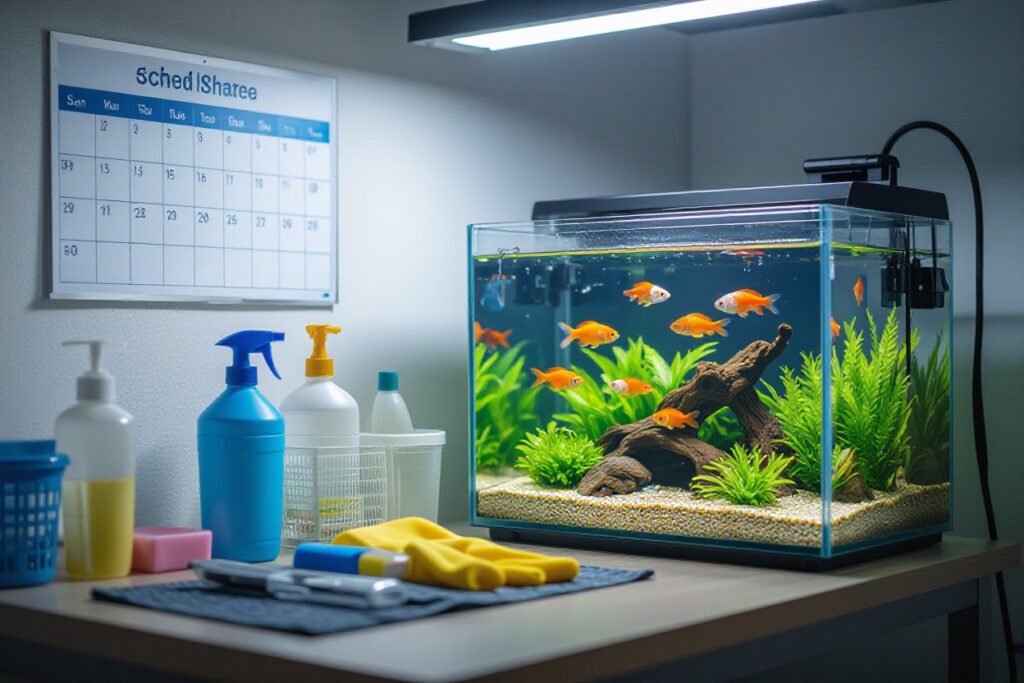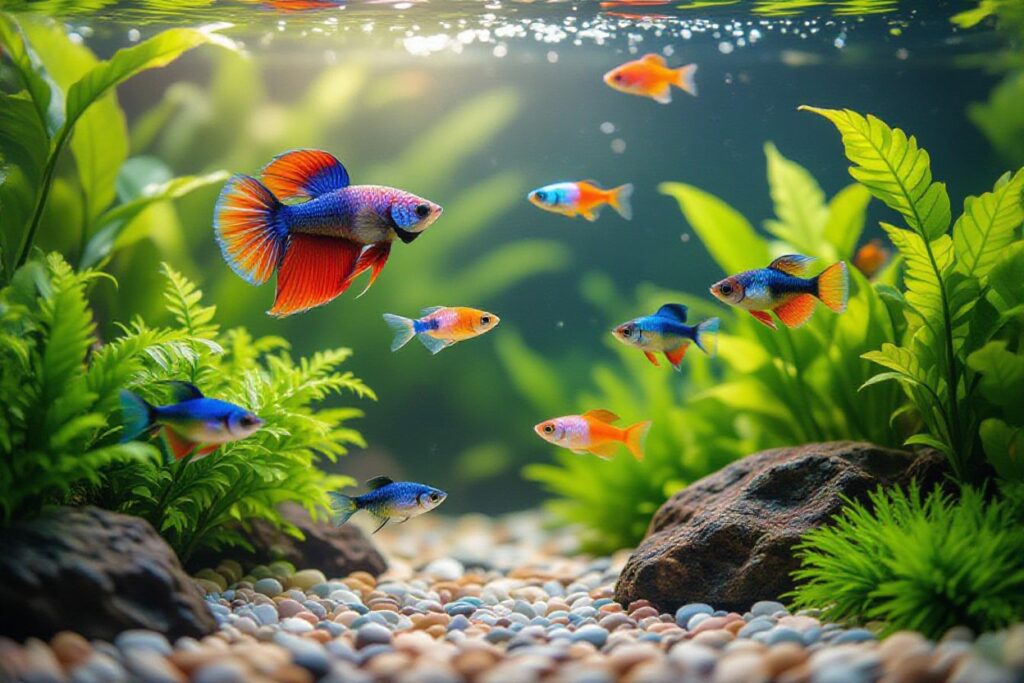It is necessary to comprehend the nitrogen cycle in fish tanks to maintain a healthy aquatic environment for your beloved pets. This natural process involves beneficial bacteria breaking down fish waste and uneaten food into less harmful substances, ultimately ensuring water quality. By understanding how the nitrogen cycle works, fish tank owners can effectively manage their tank’s cleanliness and prevent harmful toxins from building up. Let’s investigate into the intricacies of the nitrogen cycle and its crucial role in keeping your fish tank clean and balanced.

The Chemistry of the Nitrogen Cycle
Ammonia Production and Toxicity
On the onset of the nitrogen cycle in a fish tank, ammonia is produced primarily through fish waste and decomposing organic matter. Ammonia, in its ionized form (ammonium), is highly toxic to fish, even at low levels. It can lead to stress, illness, and ultimately, death if not promptly removed.
Conversion to Nitrite and Nitrate
For the next stage in the nitrogen cycle, beneficial bacteria break down ammonia into nitrite through the process of nitrification. Nitrite, though less toxic than ammonia, can still be harmful to fish in high concentrations. Another group of bacteria then convert nitrite into relatively harmless nitrate through a process known as nitrate reduction.
For instance, nitrate can be utilized by plants in the aquarium as a nutrient source, promoting healthy growth. Regular water changes are imperative to control nitrate levels, as excessive accumulation can lead to algae blooms and compromise water quality.
Biological Components of the Nitrogen Cycle
Role of Beneficial Bacteria
Any successful aquarium relies on the crucial role of beneficial bacteria in the nitrogen cycle. These bacteria, primarily Nitrosomonas and Nitrobacter species, are responsible for converting toxic ammonia produced by fish waste into less harmful nitrites and then into nitrates, which are imperative nutrients for aquarium plants.
Balance Between Fish Waste and Bacterial Activity
Biological equilibrium in an aquarium is achieved when there is a delicate balance between the amount of fish waste produced and the activity of beneficial bacteria. If there is an overabundance of fish waste and insufficient bacterial activity, ammonia levels can spike, leading to stress and potential harm to the fish. Conversely, an excess of bacterial activity without sufficient fish waste may result in a lack of imperative nutrients for aquarium plants.
This equilibrium is vital for maintaining a healthy aquatic environment and preventing potential spikes in toxic ammonia levels. Regular monitoring of ammonia, nitrite, and nitrate levels, along with proper feeding and tank maintenance, is imperative to ensure a stable nitrogen cycle in your fish tank.
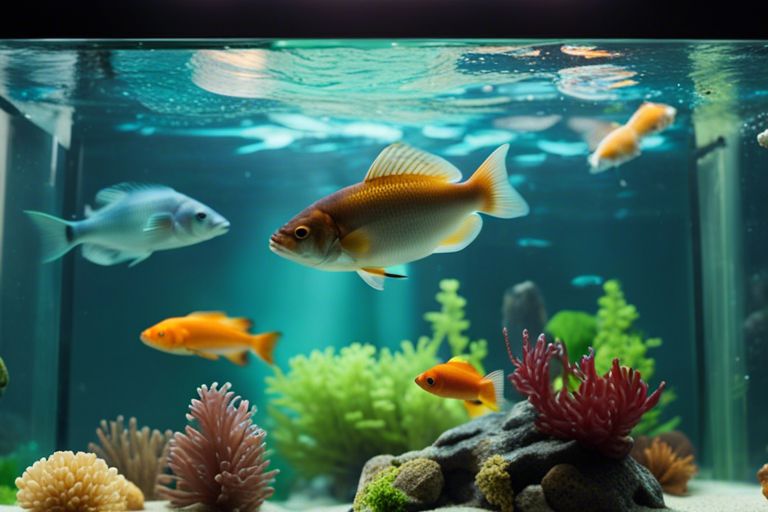
Managing the Nitrogen Cycle in Fish Tanks
Cycling a New Aquarium
Now, when setting up a new aquarium, it is crucial to kickstart the nitrogen cycle to ensure a healthy environment for your fish. This process involves establishing beneficial bacteria that will break down ammonia into less harmful substances like nitrites and nitrates.
Maintaining the Cycle in Established Aquariums
Managing an established aquarium’s nitrogen cycle is necessary for the well-being of your fish. One must regularly monitor ammonia, nitrite, and nitrate levels using test kits. It is vital to ensure that beneficial bacteria populations are thriving to efficiently convert toxic ammonia into safer compounds.
A well-maintained nitrogen cycle in an established aquarium also requires regular partial water changes to remove excess nitrates and other waste products. Additionally, avoiding overfeeding and overcrowding will help maintain the balance of nutrients in the tank, keeping your fish healthy and vibrant.
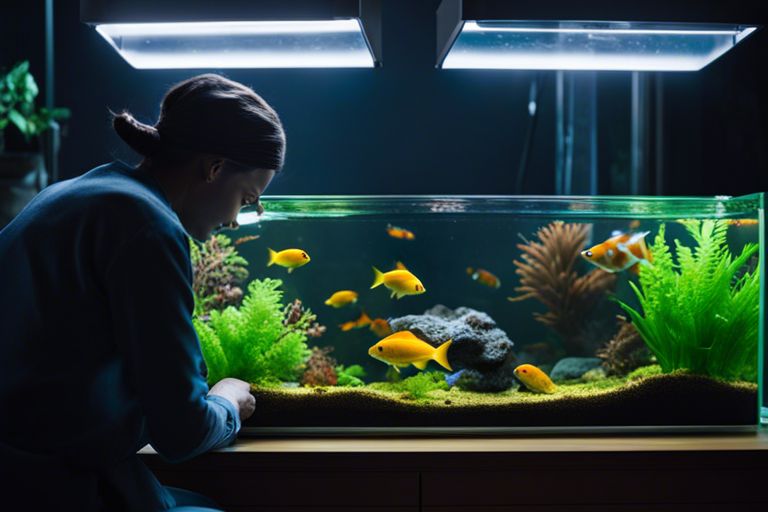
Troubleshooting and Optimization
Identifying and Solving Common Issues
To ensure your fish tank’s nitrogen cycle is running smoothly, it is crucial to be able to identify and solve common issues that may arise. To begin, test the water parameters regularly for ammonia, nitrite, and nitrate levels. If you detect any spikes in these levels, consider the following solutions:
- Ammonia Spikes: Increase water changes and ensure proper filtration.
- Nitrite Build-up: Add beneficial bacteria supplements to jumpstart the nitrogen cycle.
- Nitrate Accumulation: Enhance plant growth or consider adding live plants to absorb excess nitrates.
Advanced Techniques for Nitrogen Cycle Management
For those looking to optimize their nitrogen cycle and achieve pristine water quality, advanced techniques can be employed. One effective method is to establish a refugium or a dedicated sump system to promote biological filtration. Additionally, implementing a denitrification reactor can help convert nitrates into harmless nitrogen gas, reducing overall nitrate levels in the tank.
- Refugium or Sump System: Provides additional surface area for beneficial bacteria to thrive.
- Denitrification Reactor: Utilizes specific media to facilitate the conversion of nitrates.
Conclusion
So, understanding the nitrogen cycle and its role in fish tank cleaning is crucial for maintaining a healthy aquatic environment for your fish. By allowing beneficial bacteria to properly break down waste and convert harmful ammonia into less toxic substances, you can prevent dangerous spikes in ammonia levels and ensure the well-being of your aquatic pets. It is important to establish a balanced ecosystem in your fish tank and perform routine maintenance to keep the nitrogen cycle running smoothly. By following these principles, you can enjoy a clean and thriving fish tank that provides a safe and comfortable home for your fish.
FAQ
Q: What is the nitrogen cycle in a fish tank?
A: The nitrogen cycle is a crucial biological process in fish tanks where beneficial bacteria convert toxic ammonia into less harmful substances.
Q: Why is the nitrogen cycle important for fish tank cleaning?
A: The nitrogen cycle helps maintain water quality by breaking down fish waste and uneaten food, preventing harmful ammonia spikes that can be lethal to fish.
Q: What are the key stages of the nitrogen cycle?
A: The nitrogen cycle consists of three main stages: 1) Ammonia is converted to nitrites, 2) Nitrites are converted to nitrates, and 3) Nitrates are removed through water changes or by plants.
Q: How do beneficial bacteria contribute to the nitrogen cycle?
A: Beneficial bacteria, such as Nitrosomonas and Nitrobacter, play a vital role in converting toxic ammonia and nitrites into nitrates, which are less harmful to fish.
Q: How long does it take for the nitrogen cycle to establish in a new fish tank?
A: The nitrogen cycle can take anywhere from 2 to 8 weeks to establish in a new fish tank, depending on factors such as water temperature, pH levels, and the presence of beneficial bacteria.
Q: How can fish tank owners promote the nitrogen cycle?
A: Fish tank owners can promote the nitrogen cycle by adding a bacterial supplement, monitoring water parameters regularly, avoiding overfeeding, and performing regular water changes.
Q: What are the signs of an imbalanced nitrogen cycle in a fish tank?
A: Signs of an imbalanced nitrogen cycle include high levels of ammonia or nitrites, fish gasping for air at the water surface, lethargic behavior, cloudy water, or algae blooms.
